-
 bitcoin
bitcoin $114320.977035 USD
-0.40% -
 ethereum
ethereum $4152.439985 USD
-1.75% -
 tether
tether $1.000111 USD
-0.04% -
 xrp
xrp $2.843037 USD
-1.63% -
 bnb
bnb $1013.349380 USD
-1.62% -
 solana
solana $208.362767 USD
-2.10% -
 usd-coin
usd-coin $0.999783 USD
0.00% -
 dogecoin
dogecoin $0.232559 USD
-1.00% -
 tron
tron $0.333491 USD
-1.09% -
 cardano
cardano $0.806310 USD
0.19% -
 hyperliquid
hyperliquid $45.023720 USD
-1.59% -
 ethena-usde
ethena-usde $1.000819 USD
-0.06% -
 chainlink
chainlink $21.241249 USD
-2.11% -
 avalanche
avalanche $30.035416 USD
-0.66% -
 stellar
stellar $0.364984 USD
-2.05%
What is DeFi's automated market maker?
DeFi AMMs, decentralized and algorithmic trading platforms, revolutionize cryptocurrency trading with advantages like liquidity provision incentives, decentralization, and arbitrage opportunities, while also posing challenges such as slippage and rug pulls.
Feb 16, 2025 at 10:09 am
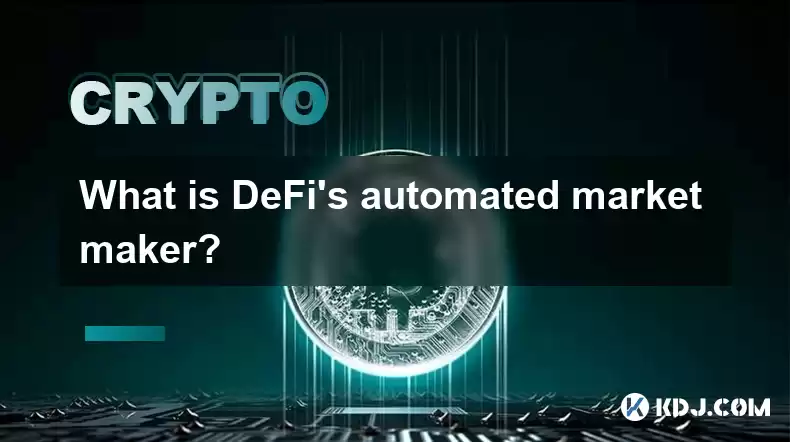
- Definition of DeFi Automated Market Makers (AMM)
- Types of AMMs (Constant Function Market Makers, Constant Product Market Makers, Hybrid AMMs)
- Benefits of using AMMs (decentralization, liquidity provision incentives, arbitrage opportunities)
- Challenges of using AMMs (slippage, impermanent loss, rug pulls)
- Top DeFi AMM Projects (Uniswap, PancakeSwap, SushiSwap, Curve Finance, Balancer)
In the decentralized finance (DeFi) space, Automated Market Makers (AMMs) play a pivotal role in facilitating cryptocurrency trading. Unlike traditional order book-based exchanges, AMMs utilize algorithms to determine the prices of assets automatically, enabling users to buy and sell cryptocurrencies in a permissionless and trustless manner.
Types of AMMsConstant Function Market Makers (CFMMs):- Use a fixed mathematical formula to determine the price of an asset based on its supply and demand.
- Examples: Uniswap, SushiSwap.
- Maintain a constant product between the reserves of two assets, resulting in a price that adjusts based on supply and demand.
- Examples: Curve Finance, Balancer.
- Combine elements of both CFMMs and CPMMs to optimize trading efficiency and minimize slippage.
- Examples: Loopring, 1inch Exchange.
- Decentralization: AMMs eliminate the need for intermediaries, providing traders with complete control over their assets.
- Liquidity Provision Incentives: Users who deposit their assets into AMM liquidity pools earn rewards in the form of transaction fees and tokens.
- Arbitrage Opportunities: AMMs often exhibit price discrepancies across platforms, providing opportunities for traders to profit from price differences.
- Slippage: AMMs can experience slippage, which occurs when the price of an asset changes between the time an order is executed and the time the transaction is settled.
- Impermanent Loss: Liquidity providers may experience impermanent loss when the relative prices of the assets in a pool change significantly.
- Rug Pulls: Malicious actors may create AMMs with the intention of stealing user funds by draining liquidity from the pool.
- One of the largest and most popular AMMs, known for its user-friendly interface and extensive token listing.
- Uses a CFMM model to determine asset prices.
- A decentralized exchange and AMM platform designed specifically for the Binance Smart Chain.
- Offers a range of features, including staking, farming, and lottery games.
- A fork of Uniswap that offers additional features, such as yield farming and governance token issuance.
- Uses both CFMM and CPMM models to determine asset prices.
- A specialized AMM focused on stablecoin trading.
- Uses a CPMM model to maintain a constant product between stablecoins, minimizing slippage.
- An AMM designed for customizable liquidity pools, allowing users to create pools with different weighting factors and trading fees.
- Uses a hybrid AMM model that combines elements of CFMMs and CPMMs.
A: AMMs use algorithms to determine asset prices automatically, while traditional exchanges rely on order books and market makers to facilitate trades.
Q: What are the risks of using AMMs?A: AMMs can be vulnerable to slippage, impermanent loss, and rug pulls. Users should carefully consider the risks before using an AMM.
Q: Which AMM is the best?A: The best AMM depends on individual trading preferences and needs. Uniswap, PancakeSwap, SushiSwap, Curve Finance, and Balancer are all reputable AMM projects with their own strengths and weaknesses.
Q: How can I participate in an AMM?A: To participate in an AMM, you can connect your wallet and either trade directly or provide liquidity to earn rewards.
Q: What is the future of AMMs?A: AMMs are expected to play an increasingly significant role in the DeFi ecosystem, providing users with decentralized, efficient, and accessible ways to trade cryptocurrencies.
Disclaimer:info@kdj.com
The information provided is not trading advice. kdj.com does not assume any responsibility for any investments made based on the information provided in this article. Cryptocurrencies are highly volatile and it is highly recommended that you invest with caution after thorough research!
If you believe that the content used on this website infringes your copyright, please contact us immediately (info@kdj.com) and we will delete it promptly.
- BlockDAG, DOGE, HYPE Sponsorship: Crypto Trends Shaping 2025
- 2025-10-01 00:25:13
- Deutsche Börse and Circle: A StableCoin Adoption Powerhouse in Europe
- 2025-10-01 00:25:13
- BlockDAG's Presale Buzz: Is It the Crypto to Watch in October 2025?
- 2025-10-01 00:30:13
- Bitcoin, Crypto, and IQ: When Genius Meets Digital Gold?
- 2025-10-01 00:30:13
- Stablecoins, American Innovation, and Wallet Tokens: The Next Frontier
- 2025-10-01 00:35:12
- NBU, Coins, and Crypto in Ukraine: A New Yorker's Take
- 2025-10-01 00:45:14
Related knowledge

How to track DeFi activity on a block explorer
Sep 04,2025 at 05:36pm
Bitcoin's Role in Decentralized Finance1. Bitcoin remains the cornerstone of the cryptocurrency ecosystem, serving as both a store of value and a benc...
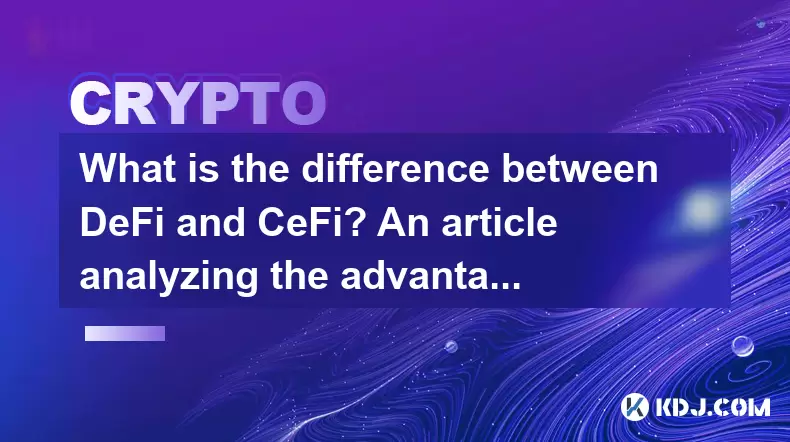
What is the difference between DeFi and CeFi? An article analyzing the advantages and disadvantages of both
Jun 13,2025 at 03:57am
Understanding the Foundations of DeFi and CeFiTo fully grasp the difference between DeFi (Decentralized Finance) and CeFi (Centralized Finance), it’s ...
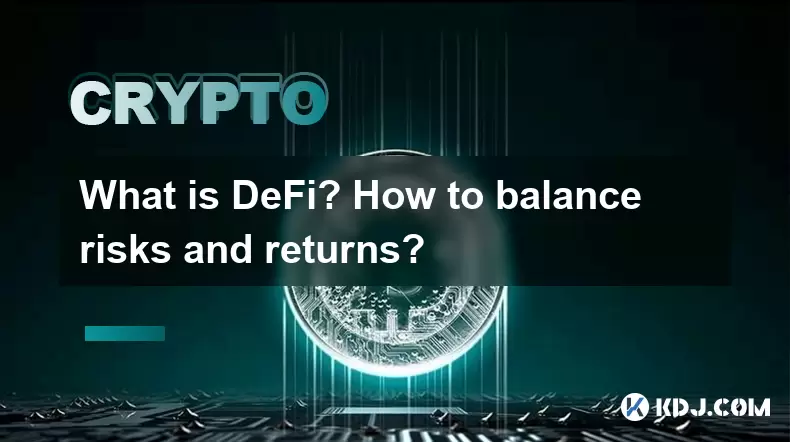
What is DeFi? How to balance risks and returns?
May 31,2025 at 12:22pm
What is DeFi? How to Balance Risks and Returns? Decentralized Finance, commonly known as DeFi, represents a revolutionary shift in the financial ecosy...
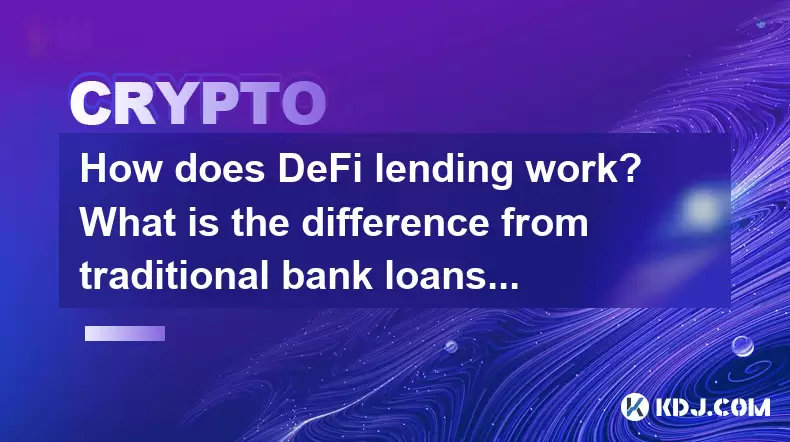
How does DeFi lending work? What is the difference from traditional bank loans?
May 29,2025 at 05:36pm
Introduction to DeFi LendingDeFi lending, or decentralized finance lending, represents a revolutionary shift in the way borrowing and lending are cond...
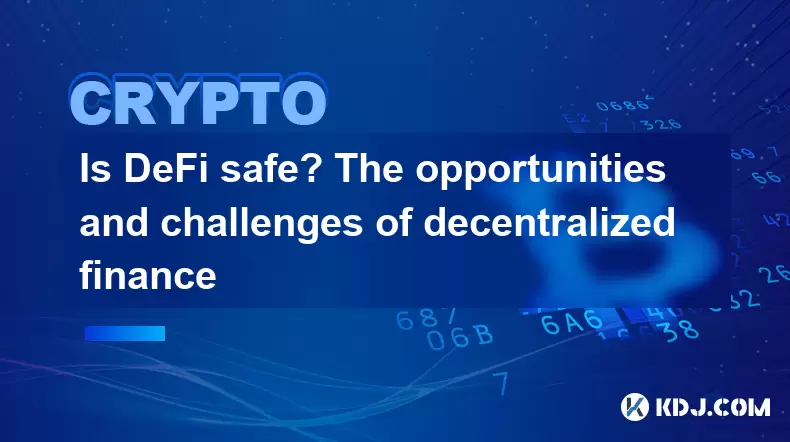
Is DeFi safe? The opportunities and challenges of decentralized finance
May 27,2025 at 02:28pm
Decentralized Finance, commonly known as DeFi, has revolutionized the financial landscape by offering a range of financial services without the need f...
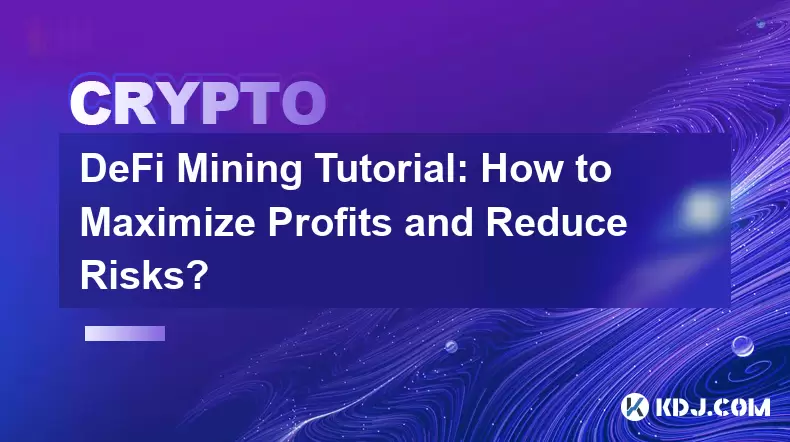
DeFi Mining Tutorial: How to Maximize Profits and Reduce Risks?
May 27,2025 at 07:42am
DeFi, or Decentralized Finance, has opened up a new world of opportunities for crypto enthusiasts looking to maximize their profits through various mi...

How to track DeFi activity on a block explorer
Sep 04,2025 at 05:36pm
Bitcoin's Role in Decentralized Finance1. Bitcoin remains the cornerstone of the cryptocurrency ecosystem, serving as both a store of value and a benc...

What is the difference between DeFi and CeFi? An article analyzing the advantages and disadvantages of both
Jun 13,2025 at 03:57am
Understanding the Foundations of DeFi and CeFiTo fully grasp the difference between DeFi (Decentralized Finance) and CeFi (Centralized Finance), it’s ...

What is DeFi? How to balance risks and returns?
May 31,2025 at 12:22pm
What is DeFi? How to Balance Risks and Returns? Decentralized Finance, commonly known as DeFi, represents a revolutionary shift in the financial ecosy...

How does DeFi lending work? What is the difference from traditional bank loans?
May 29,2025 at 05:36pm
Introduction to DeFi LendingDeFi lending, or decentralized finance lending, represents a revolutionary shift in the way borrowing and lending are cond...

Is DeFi safe? The opportunities and challenges of decentralized finance
May 27,2025 at 02:28pm
Decentralized Finance, commonly known as DeFi, has revolutionized the financial landscape by offering a range of financial services without the need f...

DeFi Mining Tutorial: How to Maximize Profits and Reduce Risks?
May 27,2025 at 07:42am
DeFi, or Decentralized Finance, has opened up a new world of opportunities for crypto enthusiasts looking to maximize their profits through various mi...
See all articles










































































